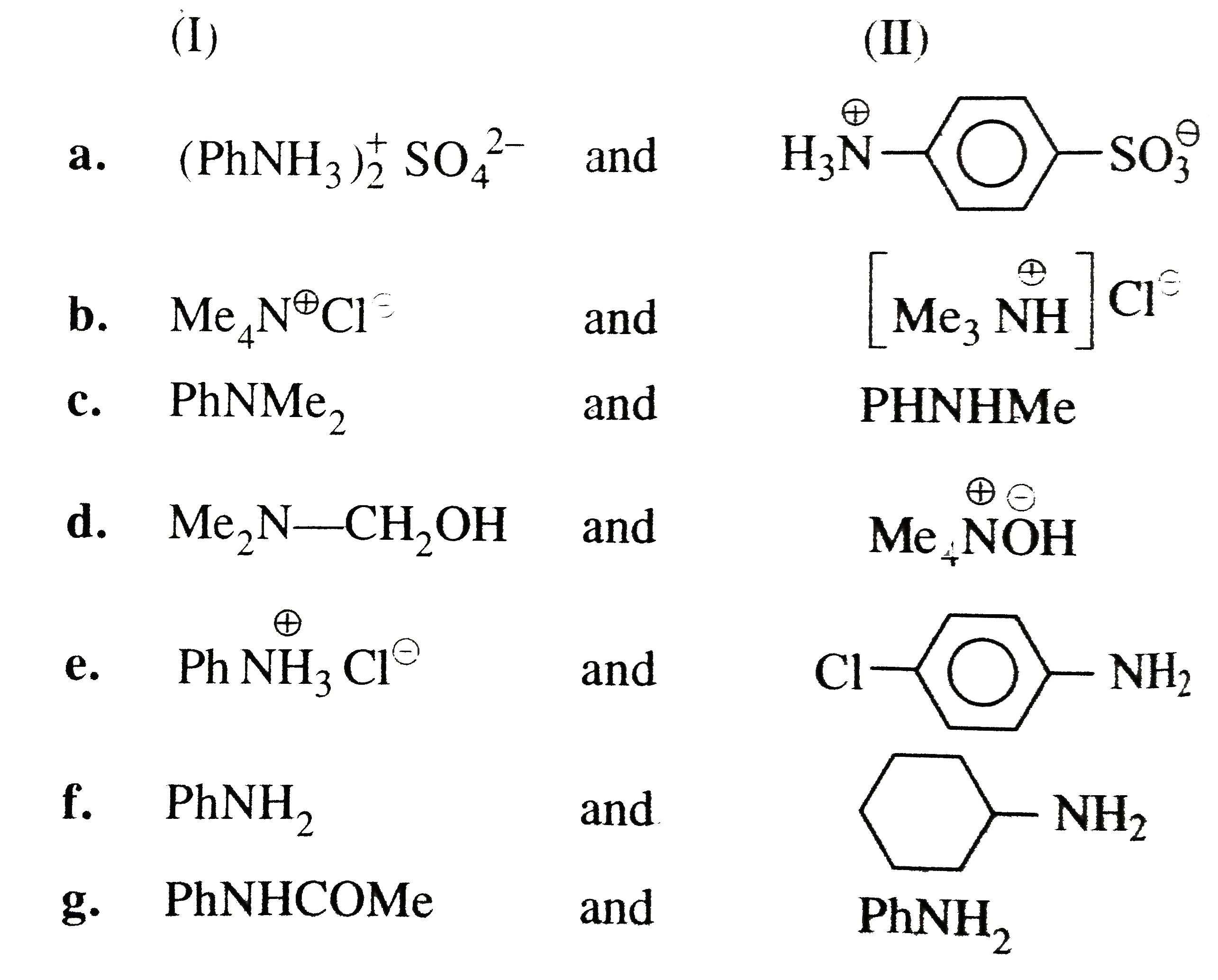Text Solution
Verified by Experts
|
Topper's Solved these Questions
ORGANIC COMPOUNDS WITH FUNCTIONAL GROUP
CENGAGE CHEMISTRY|Exercise Exercises Subjective|21 VideosView PlaylistORGANIC COMPOUNDS WITH FUNCTIONAL GROUP
CENGAGE CHEMISTRY|Exercise Exercises Concept Application|13 VideosView PlaylistORGANIC COMPOUNDS WITH FUNCTIONAL GROUP
CENGAGE CHEMISTRY|Exercise Archives Analytical And Descriptive|24 VideosView PlaylistNUCLEAR CHEMISTRY
CENGAGE CHEMISTRY|Exercise Archives Subjective|13 VideosView PlaylistP-BLOCK GROUP 15 ELEMENTS - THE NITROGEN FAMILY
CENGAGE CHEMISTRY|Exercise Exercises Archives (Subjective)|28 VideosView Playlist
Similar Questions
Explore conceptually related problems
CENGAGE CHEMISTRY-ORGANIC COMPOUNDS WITH FUNCTIONAL GROUP-Solved Examples
- Distinguish between the following pairs: {:((I),,.(II)),(a.(PhNH(3))...
Text Solution
|
Playing Now - Complete the following reactions. a. PhNO(2) overset(Zn+aq.NH(4)CI)r...
Text Solution
|
Play - Give the reagents in the following reactions:
Text Solution
|
Play - Complete the following reactions a. underset((A))(PhNH(2)) overset(H...
Text Solution
|
Play - Explain the formation of the mixture PhCH(2)CHO (I) and PhCOMe (II) wh...
02:51
|
Play - a. Distinguish between 1^(@),2^(@), and 3^(@) amines by using succine ...
Text Solution
|
Play - Identify compounds (A) through (E) in the following: p-NO(2)C(6)H(4)...
05:42
|
Play - Identify compound (A) to (E) in the following:
06:43
|
Play - (a) Identify the products: (b) Identify (A),(B),(X),(Y) and (Z) i...
18:35
|
Play - An organic compound (A) of molecular. Weight 135 on boiling with NaOH ...
16:05
|
Play - The aqueous solution of a nitrogen and chlorine containing organic com...
Text Solution
|
Play - A mixture of two organic compound is added to cold water. After filtra...
Text Solution
|
Play
 ,(b.`Me_(4)N^(o+)CI^(Theta)`,and,`[Me_(3)overset(o+)NH]CI^(Theta)),(c.PhNMe_(2)`,and,PHNHMe),(d.`Me_(2)N-CH_(2)OH`,and,`Me_(4)overset(o+)Noverset(Theta)OH),(e.Phoverset(o+)(NH_(3))CI^(Theta)`,and,(f.`PhNH_(2)`,and,(g.PhNHCOMe,and,`PhNH_(2)):}`
,(b.`Me_(4)N^(o+)CI^(Theta)`,and,`[Me_(3)overset(o+)NH]CI^(Theta)),(c.PhNMe_(2)`,and,PHNHMe),(d.`Me_(2)N-CH_(2)OH`,and,`Me_(4)overset(o+)Noverset(Theta)OH),(e.Phoverset(o+)(NH_(3))CI^(Theta)`,and,(f.`PhNH_(2)`,and,(g.PhNHCOMe,and,`PhNH_(2)):}` 
 .
.